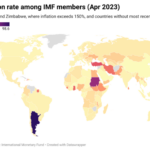Astronomers gain vital insights into the formation and growth of supermassive black holes
- James Webb Space Telescope discovers oldest black hole in the universe
- Black hole has mass of 1.6 million suns and is 13 billion years old
- Discovery provides clues about the formation and growth of supermassive black holes
- Black holes in early universe may have formed from collapse of gas clouds or mergers between stars and black holes
- Possibility of ‘primordial’ black holes created moments after the universe began
The James Webb Space Telescope (JWST) has made a groundbreaking discovery, spotting the oldest black hole ever seen in the universe. This ancient monster, with a mass equivalent to 1.6 million suns, was found lurking 13 billion years in the past. The discovery of this supermassive black hole at the center of the infant galaxy GN-z11, just 440 million years after the universe began, is providing astronomers with vital clues about how these cosmic whirlpools formed and grew. The researchers believe that black holes in the early universe may have formed from the collapse of giant gas clouds or through mergers between clumps of stars and black holes. However, they have not ruled out the possibility that some of these black holes were seeded by hypothesized ‘primordial’ black holes, created moments after, or even before, the universe began.
Public Companies: James Webb Space Telescope (N/A)
Private Companies: University of Cambridge
Key People: Roberto Maiolino (Professor of Astrophysics at the University of Cambridge)
Factuality Level: 8
Justification: The article provides information about the discovery of the oldest black hole ever seen by the James Webb Space Telescope. It explains how the black hole was detected and discusses possible explanations for its rapid growth. The article also mentions that the research has not yet been peer-reviewed, indicating that the findings should be interpreted with caution. Overall, the article presents factual information supported by scientific research.
Noise Level: 8
Justification: The article provides information about the discovery of the oldest black hole ever seen by the James Webb Space Telescope. It explains the significance of the finding and discusses possible explanations for how black holes grew so rapidly in the early universe. The article includes quotes from the lead author of the study and mentions that the research has not yet been peer-reviewed. Overall, the article stays on topic and provides scientific information supported by evidence.
Financial Relevance: No
Financial Markets Impacted: No
Presence of Extreme Event: No
Nature of Extreme Event: No
Impact Rating of the Extreme Event: No
Justification: The article does not pertain to financial topics and does not describe any extreme events.
 www.space.com
www.space.com 





